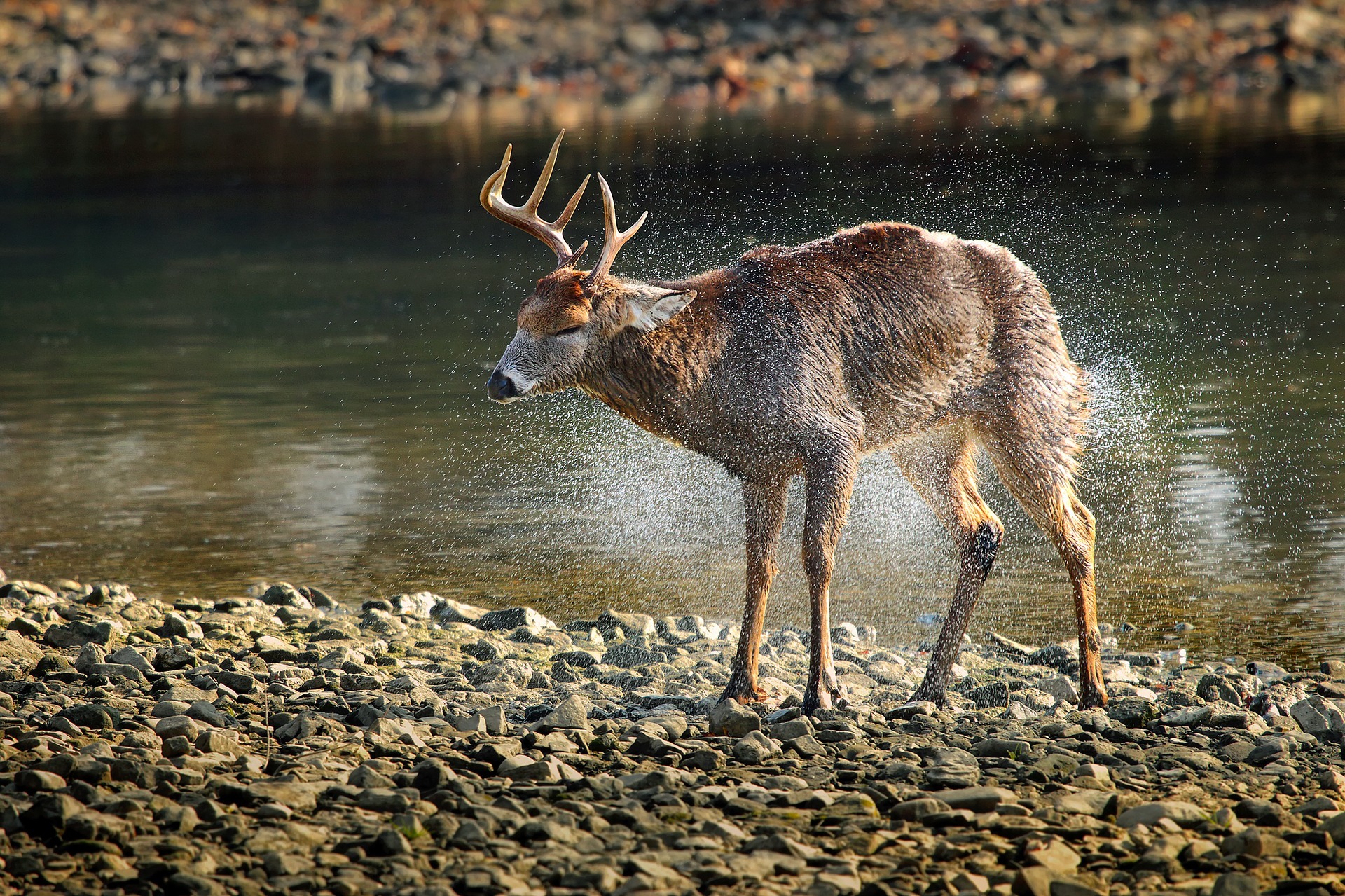5 Deer Hunting Myths
There are many myths about deer and deer hunting that exist throughout the United States. Everyone believes the one insane thing their uncle or grandfather told them, and you indeed never doubted it. Don’t worry, we at Squaw Mountain Ranch discovered that we, too, were one of these unsuspecting young hunters after some investigation. Here are five popular deer hunting myths and the reality behind them.
1 | Peeing in the Woods
There is an absurd myth that peeing in the woods is a huge sin. Peeing in the forests, on the other hand, is perfectly safe and has no harmful consequences, according to science. Ammonia, urea, sodium chloride, potassium, creatinine, and other inorganic and organic compounds make up the bulk of urine. Deer use these compounds to distinguish themselves from other deer and probably other species.
According to Brian Murphy, biologist and executive director of the Quality Deer Management Association, “humans are predators to deer, so it’s likely that deer can tell the difference between predator and non-predatory urine.” “However, unless a person leaves their smell behind with the urine, it’s doubtful that deer equate human urine with humans.
The University of Georgia performed a study in which they used buck urine, human urine, and new car scent in three separate mock scrapes and discovered that the deer did not react differently to any three. They came to the conclusion that even if the deer do not see a predator when they come across the urine, their curiosity drives them to investigate the area.
2 | Scent Control Is Super Complicated
Scent regulation can be difficult for some hunters. Scent control, on the other hand, can be easy to handle in only a few steps if you know what you’re doing. Taking care of your scent is an essential part of the chase that can make or break your success.
First, wash with scent-free soap and dry with a towel that has also been washed with a scent-free washing detergent. Whitetails are put off by the natural odours we emit, so try to keep them to a minimum.You should also wash your hunting clothes in a scent-free detergent and spray your boots and dirty things with a scent-free spray before entering.
Then you’ll want to try your hand at playing the wind. Most of the time, if you properly wash yourself and your gear, you won’t even notice the storm. Playing the wind, on the other hand, would not be a bad idea. Depending on the weather and wind direction, professional hunters have a variety of stand locations. Choose a stand that faces south if the wind is blowing north on a particular day.
3 | The Bigger the Rack the Older the Buck
The age of a single buck is a hotly discussed subject in deer culture. Many hunters would post a trail cam photo of a buck and inquire as to its age. A buck with a good set of antlers is thought to be much older by hunters. The buck with the largest rack, though, isn’t always the oldest.
The buck with the most significant body, on the other hand, is typically the oldest. When determining a buck’s age in the field, we must consider all physical characteristics, excluding the antlers. A deer’s body will usually tell you how old they are, or at least give you a reasonable guess.
A clear broadside picture of the buck is needed to estimate the buck’s age by the body. Unlike a quartering to or away picture, this will allow us to see any part of the deer we need.
After that, inspect the deer’s spine, belly, and overall body.A mature buck will have a long neck that blends into the body effortlessly. The stage where a young buck’s neck ends and their body starts would be distinct. Secondly, if the buck’s belly hangs low, it’s probably an older one. A buck with a smaller or tucked belly is younger and hasn’t gained his “old man” weight.
Finally, we’ll take a peek at the buck’s whole body. In comparison to other deer in the forest, how does he look? If he’s sleek and looks like a doe with antlers, he’s a young deer. He is a mature and older buck, even though he appears stocky and more extensive than the region’s average deer.
4 | Only Bucks Contribute To Antler Genetics
Though hunters do not believe it does not affect antler genetics, I find it amusing when I hear hunters suggest that a two-year-old deer should be culled because his antler genetics are poor. Since whitetails frequently have twins, work for antler growth could be done on the same property with similar genetics and no one will know. And just because you culled every spike or deformed buck on the property this year doesn’t mean there won’t be any next year.
Antler genetics are passed down through the generations by each doe. Even if the property’s biggest buck breeds a whitetail, that doesn’t mean his offspring would be half as fine. In comparison, a buck of average size or smaller could breed a doe with superior antler genetics and produce a fawn that is substantially larger than the parent.
An accident is another excuse you might see a “inferior” buck. When whitetails are in velvet, it is not unusual for them to injure their antlers. If they injure them in some way, their antlers will develop unusually the following year. However, if the harm is minimal, they should be able to restart normal production the following year.
If you’re interested in deer genetics, you do not want to waste a buck tag on a “management” buck because studies show that a single organism in a population has no impact on the genetics of the herd as a whole, so there’s no need to be concerned about that deer.
You would want to kill that buck to make room for other deer and prevent that deer from depleting your property’s resources. Your deer herd would be better if you have more money. Plus, with a healthy herd, bucks will expand their antlers to their genetic potential rather than be constrained by habitat.
5 | Windy Days Are Terrible for Deer Hunting
We’ve all sat in the stand, our tree swaying from side to side, hoping to see a deer. Although it can be challenging to get deer to travel on windy days, it is not difficult for us.
Try out a spot and stalk on crazy windy days when you think it’s pointless to sit in a stand. The age-old hunting technique of spot and stalk has been proven time and time again. Furthermore, when it is windy, it is much easier to get away with movement. Since the trees and brush are constantly moving, a deer is unlikely to detect any little movement you make.










